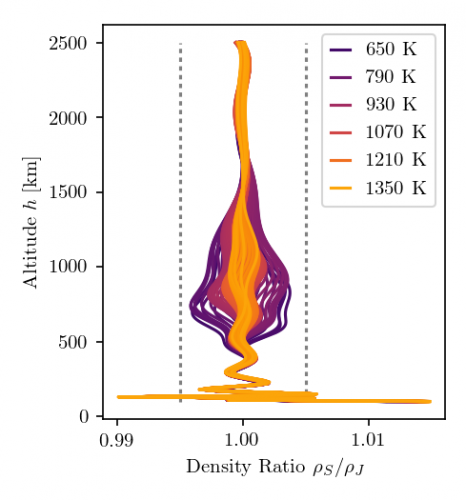The article Extension of the King-Hele orbit contraction method for accurate, semi-analytical propagation of non-circular orbits is being published by the Advances in Space Research Journal. It contains research conducted within the COMPASS group authored by Stefan Frey and co-authored by Camilla Colombo and Stijn Lemmens, space debris mitigation analyst at the European Space Agency (ESA).
The aim of the research leading up to the article was to improve the accuracy of semi-analytically propagated orbits – especially highly eccentric ones – that are perturbed by atmospheric drag. Semi-analytical formulations allow to integrate orbits quickly, by averaging out the short-term periodic effects, while retaining the possibility of incorporating perturbations, such as the ones induced by the oblateness of Earth, third bodies like the Moon and Sun or the atmosphere, accurately. However, to be able to perform the averaging, simplifying assumptions are made. For many semi-analytical formulations regarding the drag force induced by the atmosphere, such as the King-Hele formulation, the atmospheric density is assumed to decay exponentially with altitude. Locally, this assumption is valid, but over large altitude changes, it breaks down. For eccentric orbits, this can result to diverging re-entry profiles if compared to fully numerical propagation. The journal article shows how a smooth exponential atmosphere model can be used to adequately comply with the assumption and thus leading to accurate – and fast – orbit propagation.
The datasets presented in the paper can be found here. They can be used to derive the smooth exponential atmosphere density profile, fitted to the Jacchia-77 atmosphere density model. Both the static and variable model parameters are available.

